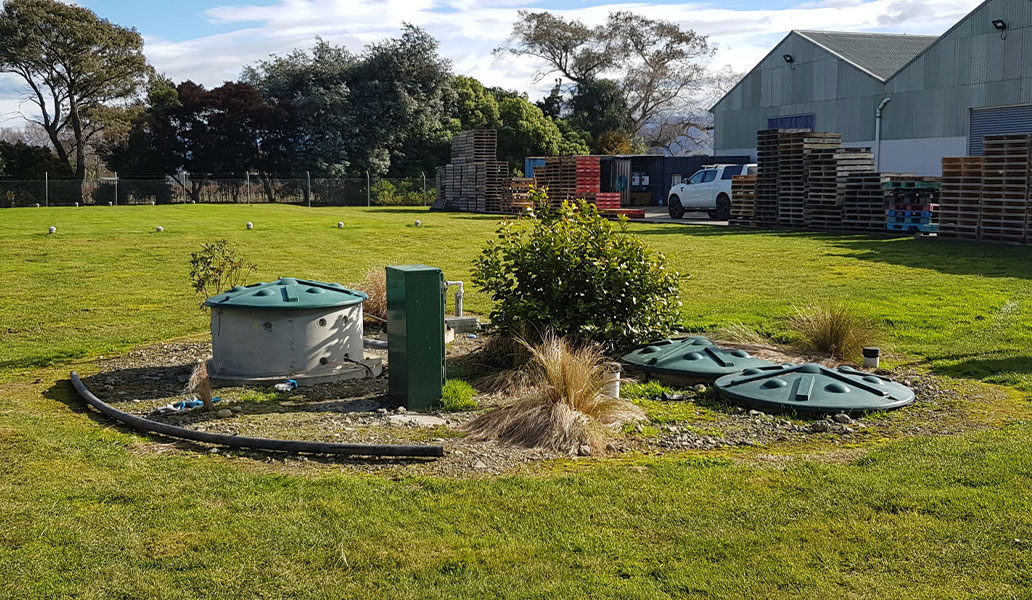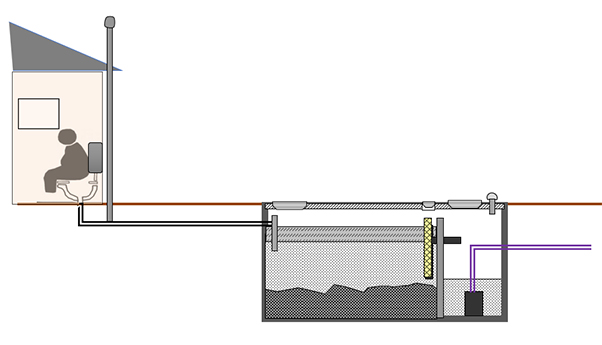On-site wastewater management systems (OWMS)

If you live in an area that does not have a reticulated sewer system, you will need to have an on-site wastewater management system (OWMS) on your property.
On-site wastewater management systems consist of a treatment plant and a land application system (such as a trench, bed, mound or drip irrigation field) which discharges the wastewater into land. The design must ensure that wastewater is managed effectively and sustainably to prevent degrading water quality in our groundwater and surface water, which can lead to significant cultural impacts and affect local drinking water supplies and the local environment.
There are many different types of on-site wastewater management systems, each offering a different level of treatment. The type used will depend on where you live, the surrounding environment and the risks to be mitigated. In some sites, a traditional primary or secondary OWMS system may not be appropriate, as the environment is too sensitive to possible contamination. In this case, an alternative system may be required. These factors will also determine whether your system can operate as a Permitted Activity or requires resource consent.
The design, construction and servicing of a new OWMS needs to be done in accordance with the Australian / New Zealand Standards – On-site Domestic Wastewater Management, and must comply with the rules set out in the Canterbury Land and Water Regional Plan (LWRP) and the Building Code, administered by the local council.
Your system will require regular maintenance to avoid ponding and odours and to reduce the risk of people getting sick or contamination.
Primary wastewater treatment systems
Primary treatment systems – like septic tank systems – include large tanks installed underground on a property to collect the wastewater produced from a dwelling. They separate the wastewater into three layers – heavier solids (sludge) settle on the bottom of the tank, fats and floating solids (scum) on the surface, and a liquid zone between these two layers. Some of the sludge and scum slowly decomposes in the tank.
Every few years the settled sludge and scum may need to be pumped out.
The liquid layer is discharged through a nearby land application system such as a trench, bed or mound. The type of land application system will depend on the level of treatment required for the surrounding environment. Sand trenches are a commonly used land application system for septic tanks.
To effectively process wastewater, and to avoid odours and ponding, your septic tank and land application system needs regular maintenance inspection and servicing by a qualified technician. This inspection is usually completed at least annually, and the technician will be able to tell you whether the sludge and scum needs to be pumped out. Sludge and scum should not need to be pumped out more than once every three years.
For more information on maintaining a septic tank system and why maintenance is important, see our wastewater systems maintenance page.
Secondary wastewater treatment systems
Like septic tanks, secondary wastewater treatment systems are installed below the ground. However, secondary systems typically consist of multiple chambers, and treat wastewater to a much higher standard.
Treatment performance between different types of secondary systems varies greatly so it’s important to check that the system is adequate for its environmental setting. Some systems may also include tertiary treatment such as ultraviolet light disinfection for additional pathogen deactivation.
In a typical secondary wastewater treatment system, treated wastewater is discharged into land through drip irrigation tubing. These driplines are usually installed underground. The area above the driplines is usually grassed or planted with vegetation.
To effectively process wastewater, and to avoid odours and ponding, your secondary wastewater treatment system – both tank and driplines – needs regular maintenance inspection by a qualified technician according to the manufacturer’s instructions – usually every six months or annually.
For more information on maintaining an aerated wastewater treatment system and why maintenance is important, see our wastewater systems maintenance page.
Other wastewater management systems
Other on-site wastewater treatment systems may include constructed subsurface flow wetlands, peat beds, composting or electric dehydration toilets and greywater-only treatment systems. They may also recycle treated wastewater for non-potable uses.
Alternative wastewater systems are likely to require specialist advice. We recommend you talk to a qualified wastewater consultant if you wish to explore one of these options.
Holding tanks
Holding tanks are often used in areas where there is insufficient suitable land area available for the management of the domestic wastewater within the property boundaries. They consist of a large in-ground holding tank fitted with a water level indicator/alarm. When the holding tank is near full, the holding tank needs to be pumped out and taken to a treatment plant by an approved wastewater pump-out contractor and no wastewater discharge is permitted.
Due to the high cost of pumping out holding tanks, they may only be appropriate for dwellings used infrequently, like baches and shearing sheds.
To minimise the cost of pump-out, there may be site circumstances where blackwater only drains to the holding tank and greywater is managed on site.
Holding tanks and greywater systems must be designed by a qualified designer in accordance with the NZ standard, and must comply with the rules set out in the Canterbury Land and Water Regional Plan (LWRP).


